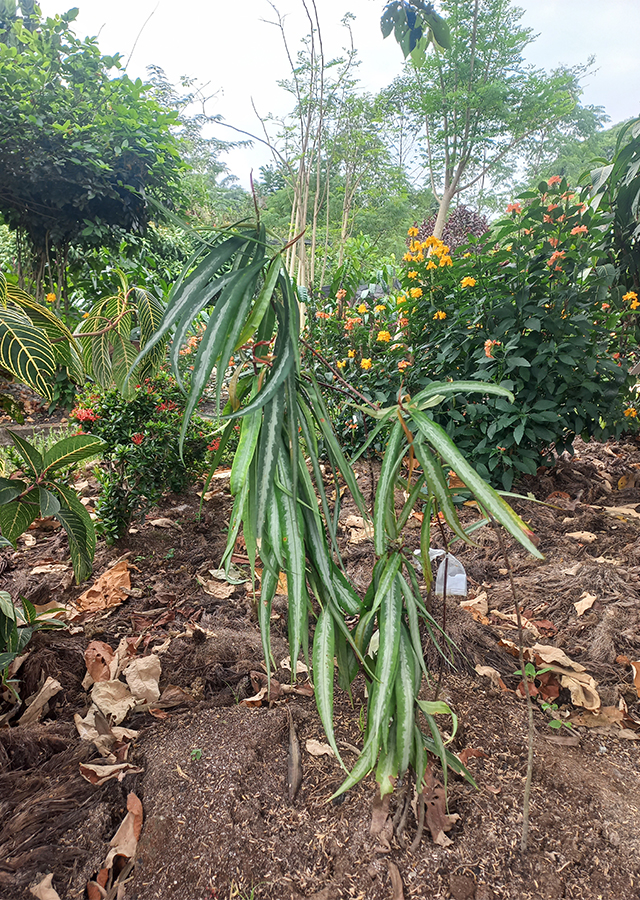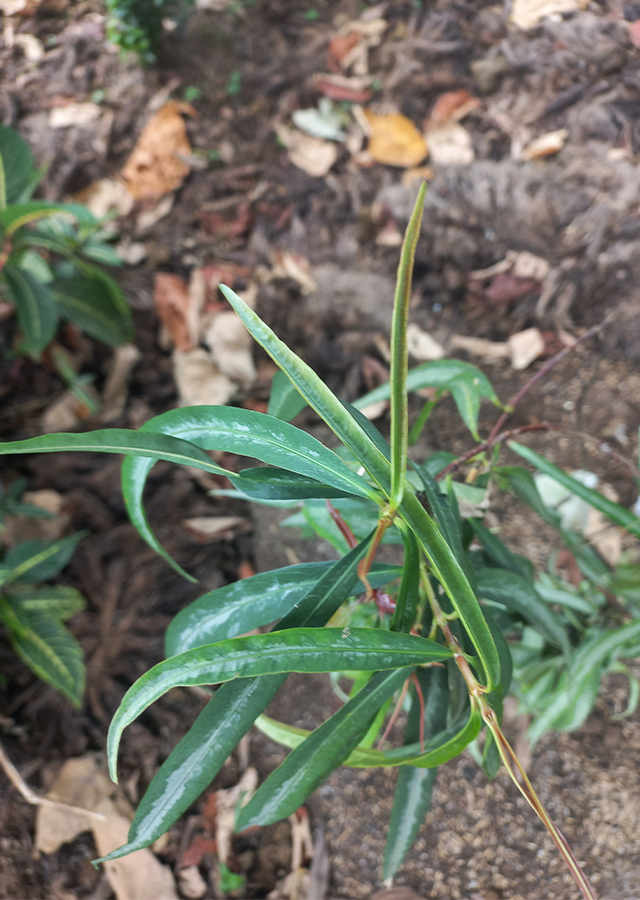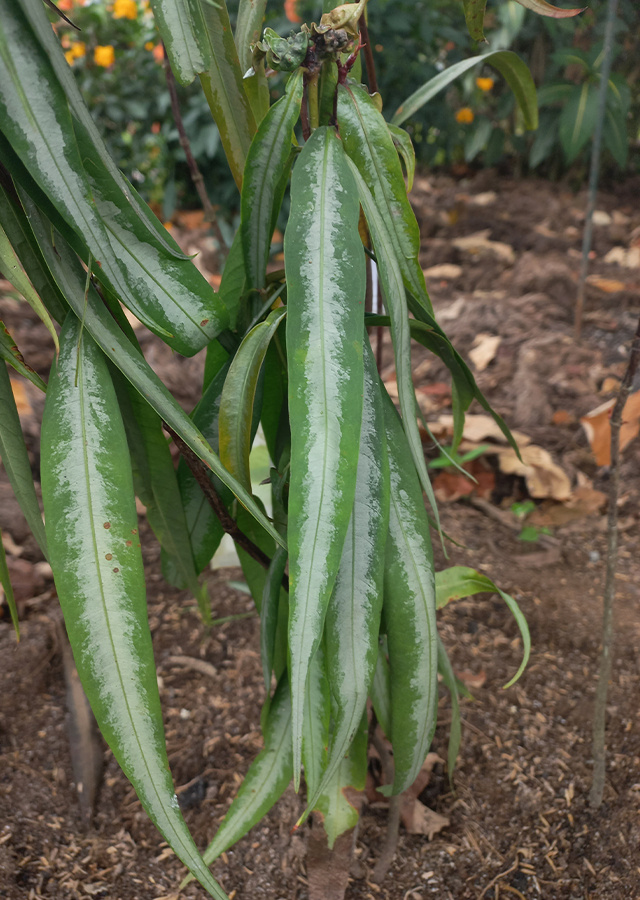Ixora salicifolia
Ixora salicifolia (Blume) DC.
Rubiaceae
Location in our garden
Principal



Synonym
Ixora longissima Merr.
Pavetta salicifolia Blume
Habitus
Shrubs. Annual shrubs, height 60-90 cm
Part Used
Leaves
Roots
Growing Requirements
Full Sunshine
Habitat
Forest
Terrestrial
Overview
First found in the mountainous forest area in Java (Indonesia) and Borneo and the Philippines. In addition to its attractiveness of flowers there is another added value on the upper surface of green leaves there are spots of white which is the main attraction, so it has the potential to be used as an ornamental plant. This plant is also used in traditional medicine in areas even though the research of the bioactivity has never been examined.
Vernacular Names
No information found. Need further search.
Agroecology
Requires warm, moist conditions, and a soil consisting of about half loam and half peat, with some sand. To form healthy plants, healthy young plants must be selected, and encouraged for rapid growth by placing them in the hot sun. Requires soil conditions with good drainage, so that water and spraying can be applied without risking the soil becoming saturated.
Morphology
- Stems - erect, sturdy, segmented.
- Leaves - opposites, adjacent to each other, borne on very short petioles, almost stemless, narrow lanceolate, very much pointed, often one long span, pennierver, whole, glabrous, dark green shining above, pale below. The stipules are oval, tapering, often stained with red.
- Flowers - terminal corymb form, large, ovary short, hemisherical, crowned with very long slender, almost filiformtube: Limbs four, ovate or lanceolate-ovate, horizontally spreding, lobe acute. Small stament, inserted in the mouth of the tube.
Cultivation
Propagated by stem cuttings and placed under full sun.
Chemical Constituents
So far, no research reports on the plant I. salicifolia have been found related to its compound content and bioactivity.
Traditional Medicinal Uses
- Medication for backache, toothache, dirty blood remover, ulcers, and as an analgesic.
Part Used
Reference Sources
- Royal Botanic Gardens. Plants of the World Online: Ixora salicifolia (Blume) DC. https://powo.science.kew.org/taxon/urn:lsid:ipni.org:names:754419-1#distribution-map. 04-06-22.
- Sir William Jackson Hooker · 1850. Curtis's Botanical Magazine - Volume 76. London.


